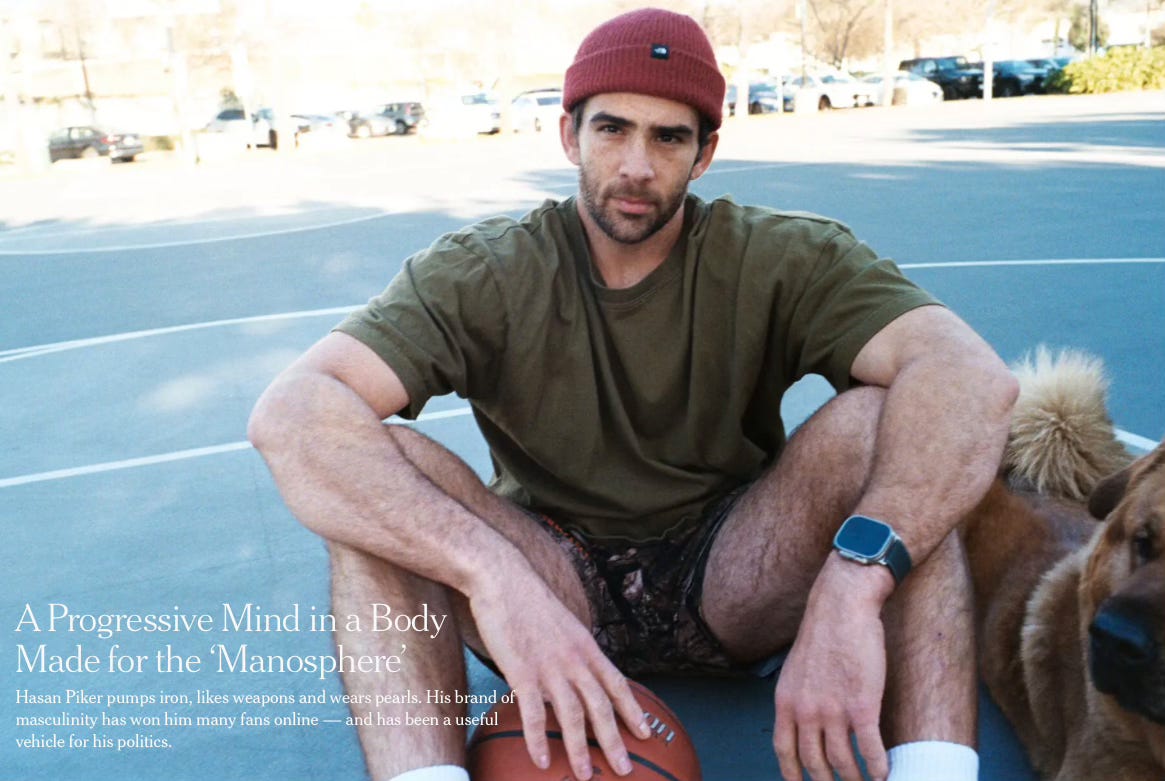What, Precisely, is the MAGA Body?
"The body is the vehicle and the vector through which fascism sends its message to the present and ensures its survival."
While the headline for the Hasan Piker profile in the New York Times did make me cringe1, I’m not gonna say it’s wrong. Fascist bodies have always been coded as masculine and militarized and we live in a society that continuously renders that combination super desirable. This has always been the through line of fascist marketing. I will explain it to you in art movements, because conversations about beauty can be not only literary, but artistic.
As this post will inevitably lead me to being more likely to be harassed by alt-right people, some of it will be paywalled. By becoming a paid subscriber you help sustain my ability to do the research that goes into my work, which allows me to freely write about the politics of beauty with no fear of upsetting advertisers. I assure you most publications would shut this piece down. I’ve certainly pitched versions of it before.
The Fascist Body Has to Be as Strong and as Pure as The Ideology It Contains.
First, there are many kinds of fascists. Let’s start with the Italians.
Italian fascists - the Mussolini breed - were just as into super muscular bodies as the current iterations you’re swiping through on Hinge. Just look at the art from the time of Italian futurists.
I won’t get you lost in the weeds of their manifesto written by F. T. Marinetti in 1909, though it is incredible and available through MoMA. I will give you my highlights, however:
Except in struggle, there is no more beauty. No work without an aggressive character can be a masterpiece.
We will glorify war—the world’s only hygiene— militarism, patriotism, the destructive gesture of freedom-bringers, beautiful ideas worth dying for, and scorn for woman.
We will destroy the museums, libraries, academies of every kind, will fight moralism, feminism, every opportunistic or utilitarian cowardice.
These are points 7, 9, and 10 of their public manifesto. Lots of people drank this shit up in the early 1900’s. Some people consider Futurism an art movement alone; really it was a political movement disseminated through art. What is art but the politics of the body in translation? Futurism was in not only sculpture and painting but seen in fashion (Fortunato Depero) and cooking (Luigi Colombo). There were actually several Futurist manifestos. They were all obsessed with strength, modernity, and fighting against the “unhygienic.”
The futurist suit must reject the melancholy of the black suit, serious, depressing and unhygienic, replacing it with a new suit suitable for moving the wearer in harmony with the dynamism of modern cities.
Giacomo Balla, Le Vêtements Masculin Futuriste manifesto.
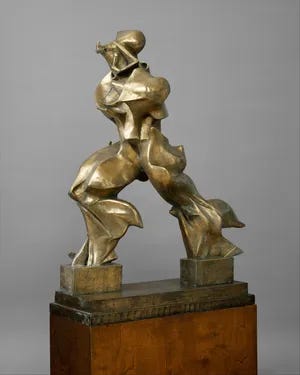
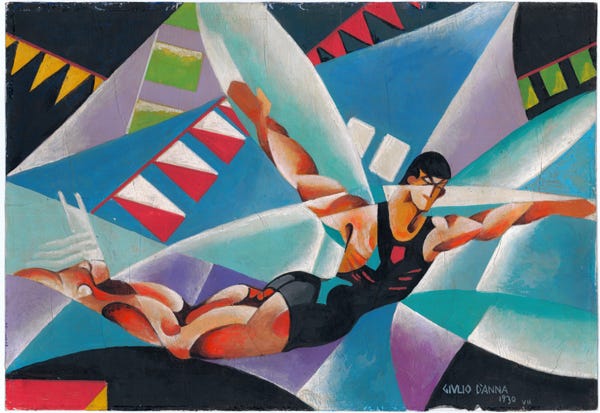
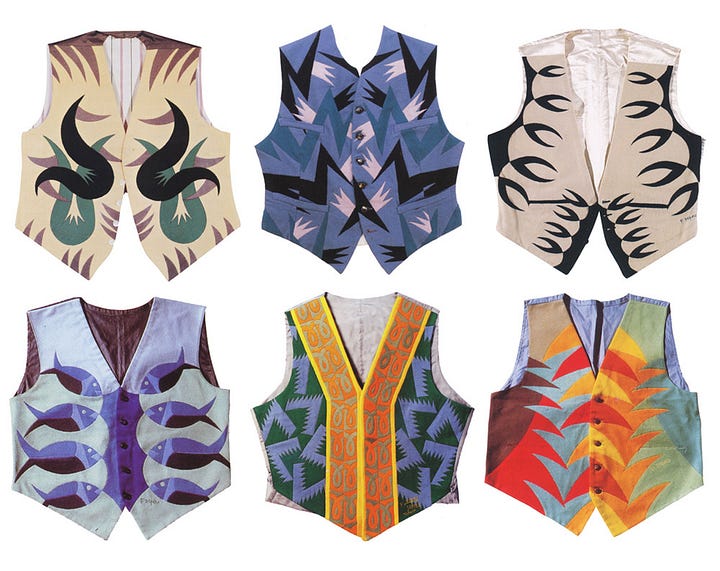
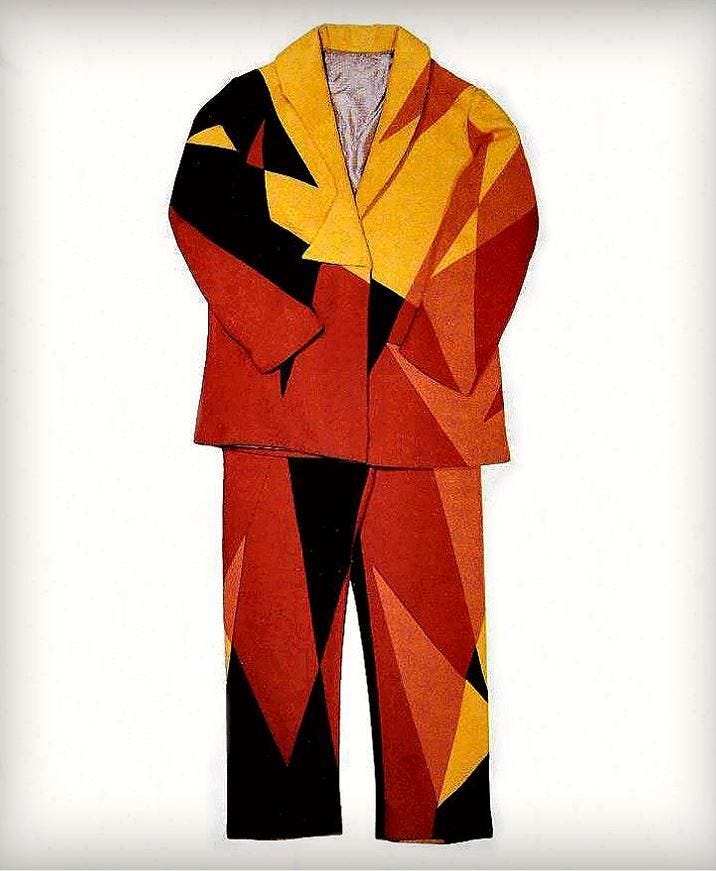
The futurists weren’t a freaky little fringe group of weirdos no one took seriously. They were at the forefront of arts and culture on a global stage, even if not everyone agreed with their politics. Thayaht, one of the more prominent designers of the movement, sometimes created illustrations for the haute couture house Maison Vionnet. Depero fled Italy after the war to escape his association with fascism and ended up designing costumes for the Roxy Theater and as an illustrator for VOGUE and Vanity Fair in the 1920s.
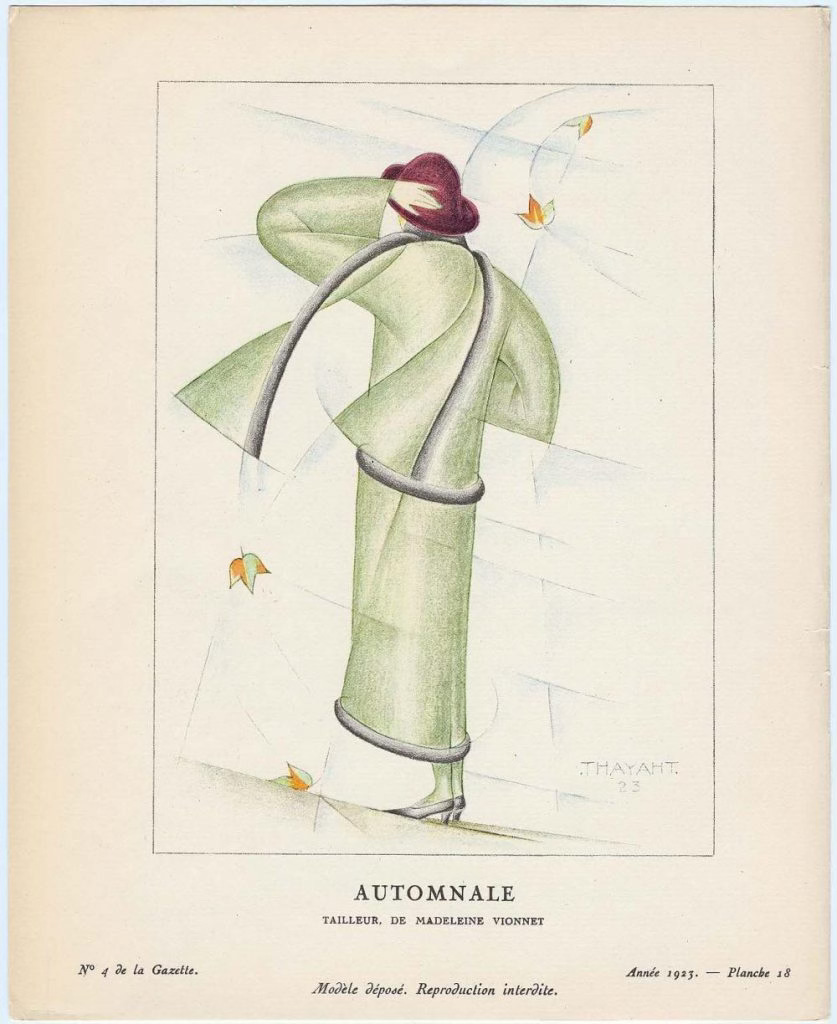
Beauty was a mode of political storytelling. Bodies told a story of what the ideal citizen ought to look like.
Italian futurists spun the classical Roman body into art more kinetic, as a way of pulling men into a new future. They wanted the fascist celebration of strength and vigor to pull the country into a new, wealthier era. Many futurist fascists were radicalized into the movement believing it would lead to a new industrial age, pulling them out of Italy’s poverty at the time, and the muscular bodies were a sign of a healthier and stronger country. Is this starting to sound familiar? I thought about it immediately when I saw that Jake Paul’s team were wearing Make America Healthy Again hats at his fight against Mike Tyson. That Netflix special was a a thinly veiled Trump rally and so many of us tuned in.
Keep reading with a 7-day free trial
Subscribe to You've Got Lipstick on Your Chin to keep reading this post and get 7 days of free access to the full post archives.



